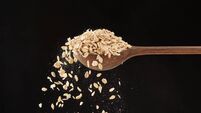Eight science-backed steps you can take now to reduce your risk of osteoporosis

The bones of lasting good health are found in being mindful of osteoporosis risks.
How robust are your bones? Even if you think you are fit and healthy in middle age, the reality is that half of women and one-quarter of men over 50 will break a bone because of osteoporosis. According to the Irish Osteoporosis Society (IOS), up to 300,000 people in Ireland have the bone-weakening condition and anyone of any age is at risk.
“We hit peak bone health at about the age of 30,” says Michele O’Brien, CEO of the IOS. “But anyone is at risk of bone loss at any stage of their life with many risk factors such as eating disorders and over-exercising, stress and a lack of vitamin D contributing to bone loss.”

Celebrating 25 years of health and wellbeing











